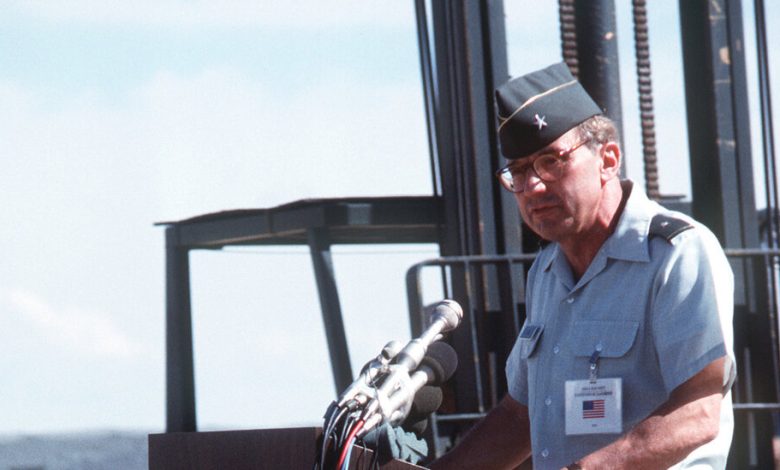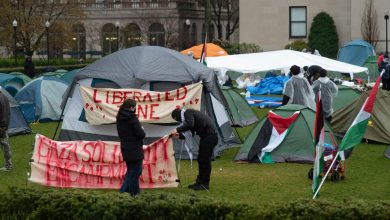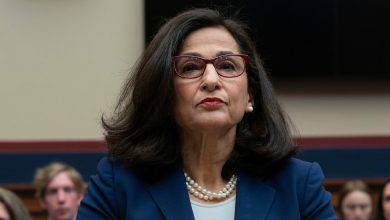Roland Lajoie, Army General at the Cold War’s Front Lines, Dies at 87

Maj. Gen. Roland Lajoie, who, behind the geopolitical scenes, played a leading role in coordinating U.S.-Soviet relations during the last decade of the Cold War, and who later oversaw the destruction of hundreds of nuclear weapons belonging to the former Soviet republics, died on Oct. 28 in Manchester, N.H. He was 87.
His daughter Renee Lajoie (pronounced la-JOY) Newell said the death, in a hospital, was from complications of heart surgery.
General Lajoie’s position at the front lines of the U.S.-Soviet confrontation was a mix of soldier and peacemaker, diplomat and spy. Fluent in Russian as well as French, he served multiple tours as an Army attaché at the U.S. Embassy in Moscow and, in the late 1970s, ran the U.S. Army Russian Institute, in Garmisch-Partenkirchen, Germany, which trained officers in U.S.-Soviet relations.
His official role in Moscow was to represent the Army in American dealings with the Soviets. But he also pushed the boundaries: During military parades he stood on the roof of the U.S. Embassy, trying to photograph the Soviets’ fearsome SS-20 intermediate-range nuclear missiles.
In 1983, then a colonel, he took over command of the U.S. Military Liaison Mission, a secretive 14-person team that, under a 1947 agreement with Moscow, was able to move around East Germany with relative freedom, observing what it could of the Soviet Bloc’s war preparations.
Members of the unit would pile into Land Rovers in the mornings in West Berlin and trundle into East Berlin across the Glienicke Bridge, a rickety structure where, in 1962, the Americans exchanged Rudolf Abel, a Soviet spy, for Francis Gary Powers, whose U-2 spy plane had been shot down by the Soviets.
Once inside East Germany, Colonel Lajoie and his team played games of cat and mouse with the minders assigned to trail them. The Soviets and East Germans would try everything to keep them away from militarily significant sites, going so far as to detain them temporarily.
Things came to a tragic end in 1985. Colonel Lajoie was returning from a family trip when he got word that a Soviet guard had shot and killed one of his men, Maj. Arthur D. Nicholson, who had been observing a Soviet tank storage site 100 miles northwest of Berlin.
Colonel Lajoie rushed to the site, only to be boxed out by Soviet and East German officers. They blamed Major Nicholson for trespassing, though the facility was on a list of sites he could visit; the guard said he had been aiming for the major’s feet, a claim Major Nicholson’s driver disputed.
A few months later, when Colonel Lajoie was again in East Germany, a Soviet truck struck his jeep while he was riding in the back seat. His head flew forward, and he broke his orbital bone. Soviet officials said it was an accident, but he suspected otherwise.
Eventually the officials offered an apology for Major Nicholson’s death but maintained that it had been an accident. The colonel, who considered Major Nicholson a friend as well as a colleague, carried the death with him the rest of his life — not out of guilt, but as a reminder of the terrible nature of the Cold War.
“It was the entire Soviet system, now thankfully gone, that had Nick’s blood on its hands,” he wrote in an unpublished 2012 account of the incident provided by his daughter. The U.S. military considered Major Nicholson the last American fatality of the Cold War.
Colonel Lajoie left the mission in 1986 to be the Army attaché at the U.S. Embassy in Paris. In 1988, he was assigned to build and lead the On-Site Inspection Agency, a military unit charged with verifying Soviet compliance with the Intermediate-Range Nuclear Forces Treaty, which banned missiles with launch capabilities between 310 and 620 miles.
By then a brigadier general, he was once more traveling around the Soviet bloc looking for weapons. But this time, his adversaries welcomed him — literally opening the doors to sites he was once kept from under threat of death.
At one point, during an inspection at a missile range called Kapustin Yar, near Volgograd, in southwest Russia, a sudden rainstorm forced him and his Soviet counterpart to take shelter in the emptied shell of an SS-20, the same weapon he had once obsessively monitored, now slated for destruction under the treaty.
“Ten years ago I would’ve been shot if I came within a hundred miles,” he told USA Today in 1988.
He retired from the Army in 1994 as a major general. Immediately after, he took over one of the last tasks of the Cold War — helping the former Soviet states secure and destroy their vast and, at the time, unstable nuclear arsenals.
Under the auspices of the Soviet Nuclear Threat Reduction Act, he led hundreds of technicians and officers to Russia, Kazakhstan, Ukraine and other countries to help dismantle weapons, secure their warheads and, in many cases, convert the nuclear cores to civilian reactor fuel.
Roland Lajoie was born on Aug. 11, 1936, in Nashua, N.H., near the state’s southern border. His parents, Ernest and Alice (Bechard) Lajoie, were French Canadian immigrants, and Roland grew up speaking French at home. His father worked in a textile mill, and his family was so poor that, General Lajoie later joked, his parents couldn’t afford a middle name for him.
He was the youngest of eight children, and after graduating from high school his siblings pooled their money to send him to the University of New Hampshire. He graduated in 1958 with a degree in government and immediately entered the Army as a second lieutenant.
He served two tours in Vietnam as an intelligence officer and received a master’s degree in Russian history from the University of Colorado in 1971.
He married JoAnn Sinbaldi in 1961. Along with their daughter Renee, his wife survives him, as do another daughter, Michelle Detwiler; a son, Christopher; a sister, Madeleine Lajoie; and four grandchildren.
In 1998, President Bill Clinton named General Lajoie head of a joint commission with the Russians to look for American soldiers missing in action on Russian territory, especially those who fought in World War II. In 2000, they located the remains of seven U.S. airmen whose bomber crashed over the Kamchatka Peninsula, in the Far East of Russia, in 1944.
General Lajoie will be buried at Arlington National Cemetery. Among his final requests was to be interred close to the grave of his old friend, Major Nicholson.



